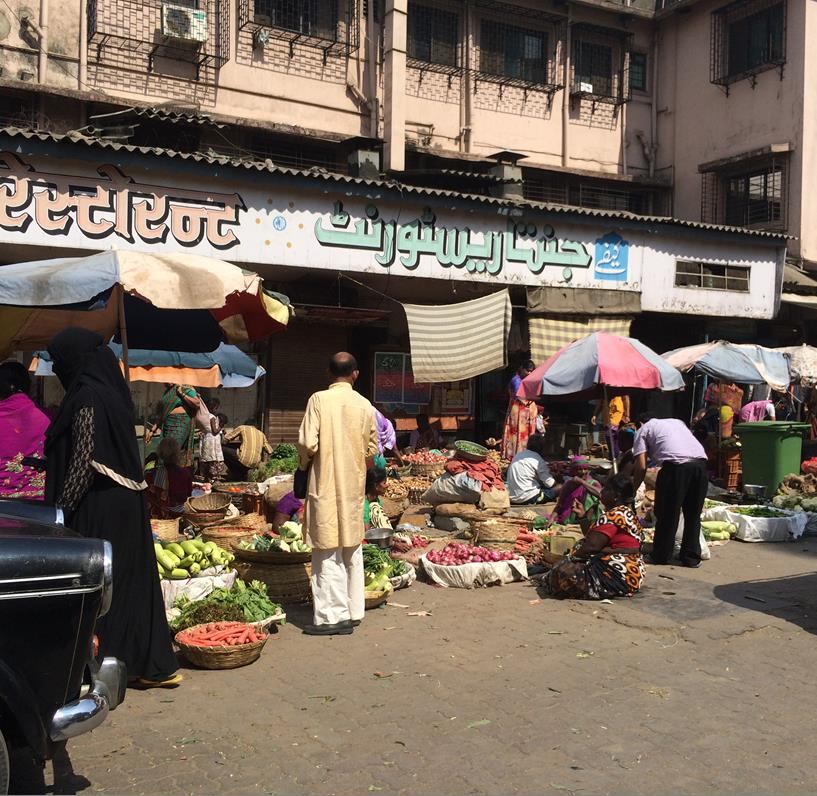
By Cameron Young
B. Arts (Languages) (Political Economy, Government, and International Relations, Italian) 2014-2017
Indian urbanisation has been a saving grace for millions of Indian citizens. Employment opportunities, access to education, and better health and sanitation facilities provide a stark contrast to the inadequate social and economic opportunities available in many rural and remote communities. In parts of rural India high infant and maternal mortality rates, low life expectancy, poor literacy, and volatile food security drive households to migrate to the cities. We have learned that approximately 750 families migrate from rural communities to Mumbai alone, each day. However, life is not easy for new migrants and finding decent employment is a major obstacle.
The vast majority of employment in India is informal, insecure and small scale. Labour-intensive methods of production and unregulated markets dominate and workers are unprotected with no access to social security benefits. Nevertheless informal work is a valuable means of subsistence for millions of Indians who do not have the skills and qualifications to acquire employment in the formal sector. In addition, cheap, unregulated labour is indispensable for multinational corporations who rebrand products produced by informal workers in home-based operations and sell them on the global market. Survival and the search for profit drive and reproduce the informal economy.
During our brief tour of Mumbai city I met a young boy called Bubbles and his sister who were integrated at a young age into the informal economy. After school finished at 3pm, Bubbles and his sister would walk up and down the street with a box of bangles and handful of colourful pouches to sell to visitors outside the Gandhi Museum. It is not uncommon for children from low socio-economic backgrounds like Bubbles to work at a young age in order to contribute financially to their family unit. Unfortunately, for Bubbles and many other Indian workers, the informal system is manipulated to benefit those higher up in the global supply chain. Unregulated and cheap labour allow multinational firms to extract surplus value for profit through the payment of miniscule piece rate wages. While stable employment in Australia gives me the resources to buy a shirt suitable for the sultry Mumbai weather, the Indian informal labourers who made the shirt do not share the same kind of security.
I met another man called Raj, aged twenty, who had been selling small wooden drums near the Gateway to India for five years. He told me that the working conditions of a street vendor were not ideal. Long days of plying his wares without the assurance of making a sale was a constant worry. His wage was entirely dependent on variables such as his bargaining skills, the weather, tourist density, and personal health. No laws protect his rights as a worker. In addition, he spoke of how his need to work for his survival meant that he did not go to school. Thus his ability to move out of informal work was compromised. Whilst Bubbles and Raj provide a peak into the informal economy, they by no means represent the full diversity of informal labour which includes workers in the industrial, agricultural and service sector.
The complex and diverse nature of the informal economy in India makes it difficult to find any single cause. Our lecturers have pointed out several interlocking reasons for the pervasive nature of the informal economy: the weakening bargaining power of labour and neoliberal economic policies. But I am left wondering how can Indians in the informal employment sector overcome issues of social insecurity, lack of employment rights, and degraded working conditions? I hope that our upcoming trip to the famous Dharavi slum will help me understand more about the dynamics of the informal economy and ways to improve the life and working conditions of these workers.
Skip to content

